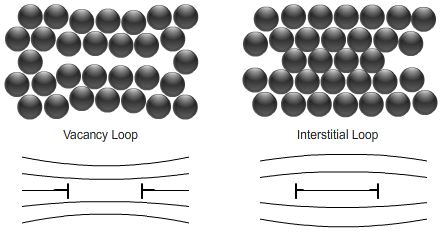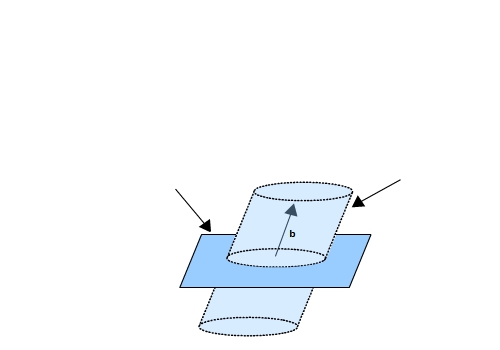Re-use of this resource is governed by a Creative Commons
Attribution-
NonCommercial-ShareAlike 4.0 International
https://creativecommons.org/licenses/by-nc-sa/4.0/
NonCommercial-ShareAlike 4.0 International
https://creativecommons.org/licenses/by-nc-sa/4.0/
Formation of dislocation loops.
Below is an animation showing a simplified lattice, representing
atoms as solid spheres and containing vacancies. When you start the animation,
the vacancies tend to migrate to the same plane as each other forming
a dislocation loop as shown. It is important to realise that this phenomenon
actually takes place on a much larger scale involving many more atoms,
and that the movement of vacancies is still random, even if biased in
certain directions; there's no guarantee the vacancy will reach a dislocation
loop.

Formation of dislocation loops.
In addition to vacancies aggregating, interstitial atoms
also form discs between lattice planes. This causes distortion of the
lattice surrounding it, thereby making it increase in volume. The lines
represent planes of atoms, with standard notation representing dislocations.

Formation of dislocation loops.
To better understand what a dislocation loop is, consider
this diagram of a single plane. The diagram shows a vacancy loop looking
down upon the plane. Note the other vacancies in the lattice.

Formation of dislocation loops.
Lattice plane
Glide cylinder
or prism
or prism
Now let's consider how vacancy loops travel through the
lattice. The following illustration shows the glide cylinder through which
the dislocation loop can travel. The b arrow shows the Burgers vector
of the dislocation.